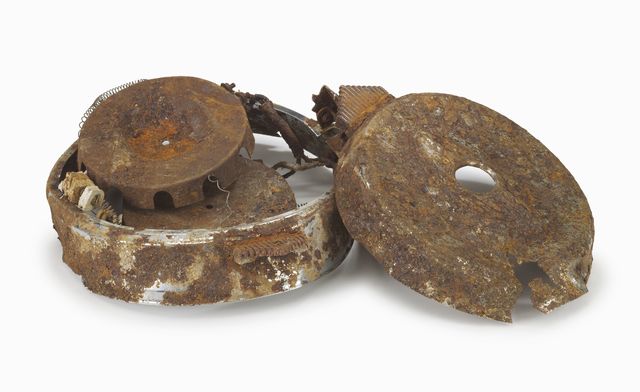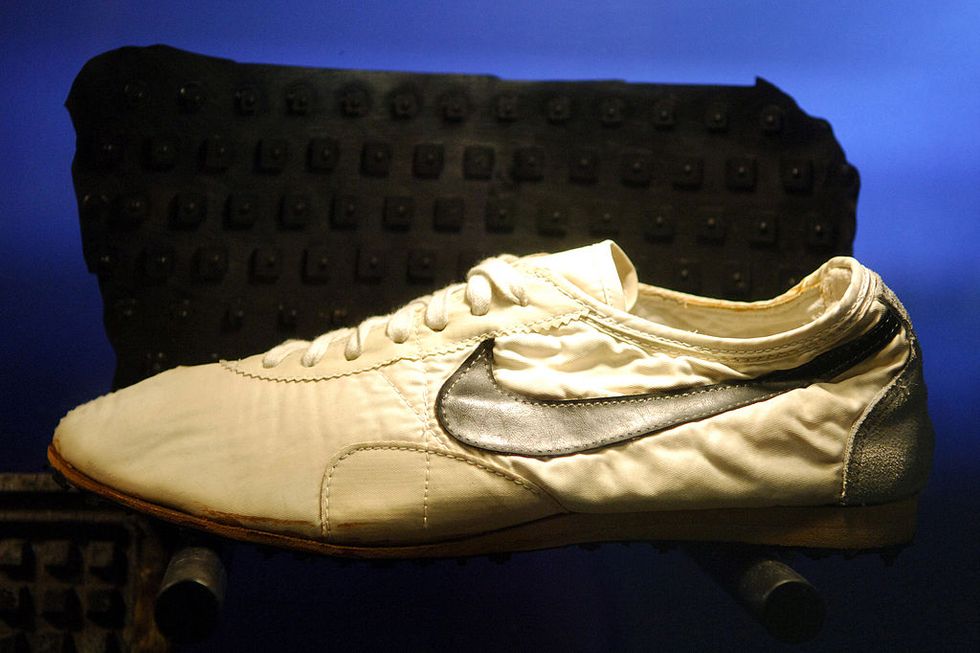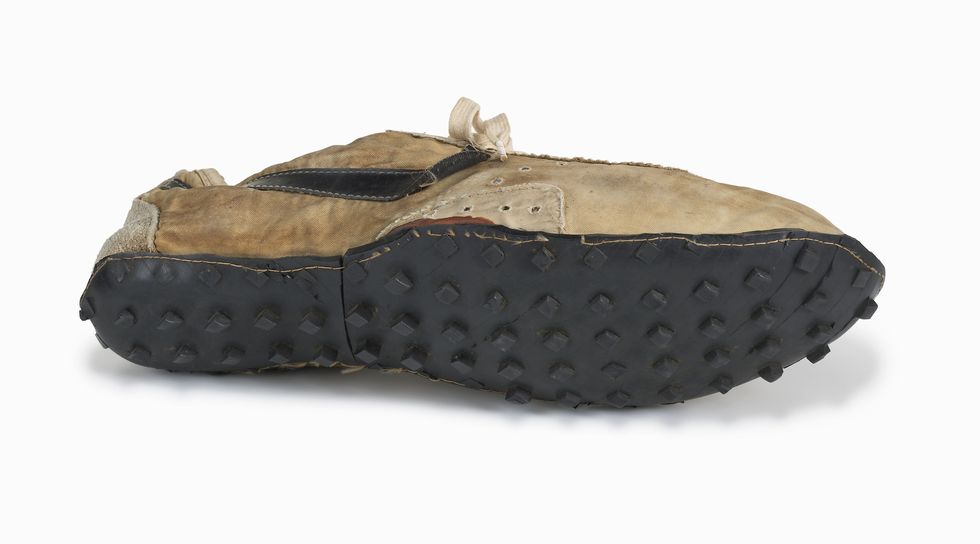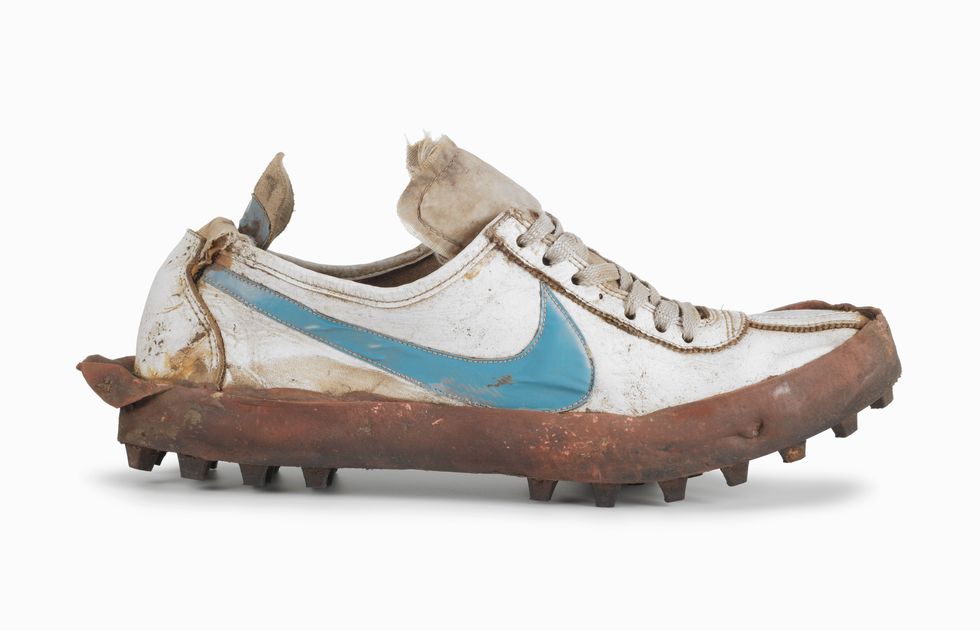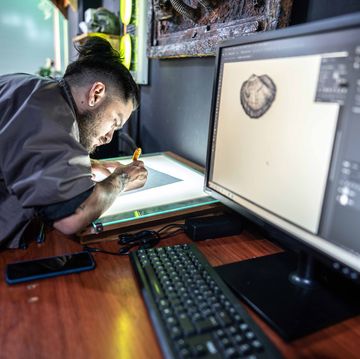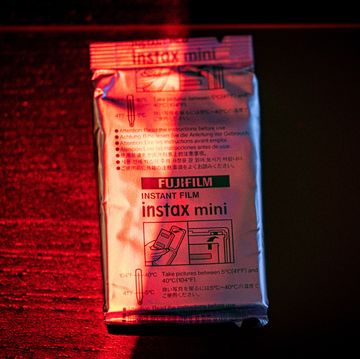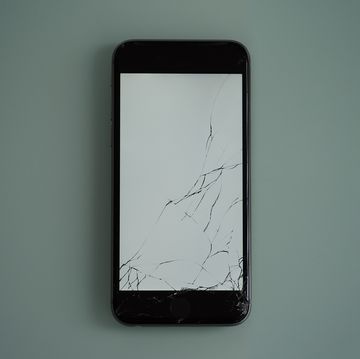The old waffle iron is brown with rust and broken into pieces. Yet there it sits in a protective case, smack in the middle of Prefontaine Hall at Nike's World Headquarters near Beaverton, Oregon. Why treat a waffle iron like a museum piece? The answer has nothing to do with breakfast food.
Forty-five years ago, Nike co-founder Bill Bowerman used this common household appliance to create the company's Waffle Trainer, the shoe that launched a billion-dollar athletic empire. For decades, this icon of Nike's success was thought to be forever lost to history, the device thrown away in the trash but its story shrouded in myth and legend. Then, in 2010, it rose from its soiled grave when it was accidentally rediscovered in a backyard garbage pit, inspiring biblical hyperbole from the most ardent of followers.
"As a Nike historian," Scott Reames told Popular Mechanics, "it's like my Holy Grail."
Before the Swoosh
In early 1971, there were no Air Jordans. No "Just Do It." No Swoosh. Nike wasn't even Nike. It was a small company called Blue Ribbon Shoes co-founded by an ex-collegiate runner named Phil Knight and his University of Oregon track coach, Bill Bowerman.
Bowerman was an Oregon legend long before Nike came along. He was born in Portland in 1911, a month after his father Jay Bowerman's term ended as the state's governor. After excelling as a multi-sport athlete at both Medford High School and the University of Oregon, he was whisked off across the Atlantic during World War II where he engaged in several bloody and dangerous battles. Returning home a war hero, Bowerman quickly became Oregon's track coach. Over a career that spanned more than two decades, he led the university to four NCAA track titles, coached 33 Olympians, served as the Olympic track coach in 1972, and co-wrote the definitive book on jogging. It was Bowerman's constant tinkering and striving to make a better running shoe, however, that forever tied him to Phil Knight.
By his own admission, Knight wasn't a star on Bowerman's track teams of the late 1950s. Knight would later say he believed Bowerman chose him to test his shoe modifications because he "wasn't one of the best runners on the team. Bowerman knew he could use me as a guinea pig without much risk." Bowerman was willing to try anything in pursuit of a lighter shoe, including making footwear out of carp skin, rattlesnake skin, and even kangaroo skin. To increase durability, Bowerman focused his attention on developing lightweight replaceable spikes using different alloys of metal, rubber, and plastics, which allowed for better traction on a variety of surfaces. Bowerman concocted these prototypes for Knight and then bombarded him with questions about performance. Soon Knight's teammates wanted a pair. That group included Otis Davis, the first person to win an Olympic gold medal in a pair of Bowerman-made shoes.
Their paths diverged after Knight's graduation, but the two reconnected in 1963 when Knight wrote Bowerman a life-changing letter. The previous year, Knight made an impromptu trip to Japan, where he had negotiated (perhaps using a few white lies) the distribution rights in 13 U.S. states for the Onitsuka Tiger, a running shoe virtually unknown in America at the time. Hoping Bowerman wanted to be a customer, Knight received a rather surprising response—he asked Knight about "cutting your old coach in." Within a week the two agreed on a partnership, and with a handshake, Blue Ribbon Sports was born.
Returning to Oregon, Knight rode around to local track meets selling the shoes from the trunk of his green Plymouth Valiant. With the help of the company's first full-time employee, Jeff Johnson, Knight proved his mettle as a salesman, pushing the company to a million dollars in sales by 1970. But operating costs were soaring, and it became increasingly clear that the relationship with Onitsuka (the company that would become Asics) was souring. In fall of 1971, Blue Ribbon Sports decided it was time to make their own shoes.
It Came From the Kitchen
When his partnership with Onitsuka started to crack, Knight went looking for a signature innovation. Although Bowerman had developed the Cortez, it was under their agreement with Onitsuka. Production had commenced on the company's first shoe, a soccer cleat named after a Greek goddess. "The Nike", released in 1971, would be the first to carry the now-famed "Swoosh" logo that was designed by a recent college grad for $35. The company would finally change its name to Nike, Inc., in 1978, but the shoe wasn't a huge seller. In this moment, Blue Ribbon needed a breakthrough.
"The 18-month-or-so window was a humongous inflection point for our business," says Reames, who's been Nike's corporate historian since 2004, "We went from being a footwear distributor for another brand... to becoming masters of our brand. We needed something that hit, something that would show that Nike was bringing its own innovation to footwear."
Meanwhile, back in Eugene, Bowerman's runners were having a heck of time adapting to the relatively new (and expensive) urethane track that had been installed at the University of Oregon. Traditional metal spikes were ripping it up and athletes struggled to keep their traction. Bowerman went searching for alternatives, like a softer spike that wouldn't destroy their new track and could work on other surfaces, like dirt, grass, and bark chips. Years later, Bill's wife Barbara would describe her husband as obsessed with this problem and unable to think of anything else—"just the urethane track."
The answer came from the kitchen, of all places.
The story of the waffle iron has taken on an apocryphal tone all these years later. The truth is that Bowerman was looking for inspiration anywhere. He was constantly asking Barbara to search through her jewelry for anything "that had stars on them or things that we thought would indent or make a pattern on the soles." And he loved to work in the kitchen.
Reames calls what happened next "The Breakfast Epiphany," and he tells the story like this: In late 1971, Bill and Barbara were sitting in the kitchen together on a Sunday morning. Normally at church on Sundays, Barbara decided to stay home that particular day to help Bill find an answer to this perplexing question. So she started making breakfast on an old waffle iron that was a wedding gift back in 1936, distinctive for its old-fashioned Art Deco design. The epiphany came as Barbara was serving her husband breakfast.
"As one of the waffles came out, he said, 'You know, by turning it upside down – where the waffle part would come in contact with the track – I think that might work,'" Barbara told Reames in a 2006 interview for the Department of Nike Archives, "So he got up from the table and went tearing into his lab and got two cans of whatever it is you pour together to make the urethane and poured them into the waffle iron." In his excitement, Bowerman forgot to spray a nonstick substance into the waffle iron. Unable to open the waffle iron back up, Bowerman abandoned it and went into town to fetch new waffle irons for his experiment. Barbara, meanwhile, threw out the now-ruined wedding gift.
Nike's Waffle Trainer debuted in 1974. The rubber spikes didn't tear up the track, and the shoe worked for every type of surface."It would adapt to the surface you were running," Reames says. "It was almost like a self-adjusting form of traction that you didn't get with a metal spike." Embraced not only by passionate runners but also, as Time put it, "the army of weekend jocks suffering from bruised feet," the Waffle Trainer became a part of American history and cemented Nike's place as the iconic brand it is today. Bill Bowerman became a shoe legend; Knight pronounced him in his memoir "the Daedalus of sneakers."
As for the original waffle iron, Barbara Bowerman would always say she simply threw it away. And for decades, that's how the story ended.
"Are You Kidding Me?"
In August 2010, Reames received a stunning email from the Bowerman family. "It said, 'we found, what we believe, is the original waffle iron.' I was like 'Are you kidding me?," Reames says. "I had asked Barbara at least two or three times about the waffle iron, she would laugh... and say she threw it away. It never occurred to me that they lived in a very rural area, so when she said threw it away... she meant she tossed it in a rubbish pit."
Many years had passed since the Bowermans moved out of the house where the waffle story happened. Located in the western Oregon town of Coburg (population: 1,000), the house was remote, up on a hill and only accessible by a thin one-lane road. There was no way a garbage truck could reach the property, so they often just buried trash in a pit out back. The long-married couple eventually moved away to Fossil, where Bill died in 1999 and Barbara in 2010. But their son, Tom, lived on the family property in Coburg and decided to expand the carport. Digging alongside the house, he came across a treasure trove of Nike history buried alongside the house. There were crudely cobbled-together shoes, old prototype metal plates, cracking rubber soles, peeling molds, and a rusty old waffle iron. Thanks to the distinctive 1930s design, Reames knew this was the appliance that created the Nike we know today.
The Bowerman family gave the waffle iron and some other artifacts found in the pit to the Nike Archives in exchange for a donation to the high school track program that Bill and Barbara's son Jon coached. In 2011, Nike's Holy Grail was put on display in Prefontaine Hall, where it has remained ever since.
"It's a perfect example... of how we find innovation, where we look for it, how it can come from the most mundane or unlikely sources," says Reames, "That's an important message... we can find inspiration in literally anything."
Matt is a history, science, and travel writer who is always searching for the mysterious and hidden. He's written for Smithsonian Magazine, Washingtonian, Atlas Obscura, and Arlington Magazine. He calls Washington D.C. home and probably tells way too many cat jokes.
